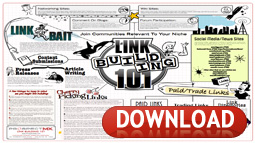The web is a huge marketplace for promoting and selling your products and services. If you’re not already utilizing the internet to its fullest extent in regards to sales and marketing, you’re missing out and in a huge way! Just having a website can increase sales, grow your customer base, service your current customer base and increase your brand presence and awareness.
Whether or not you’re ready to engage in an in depth internet marketing strategy, there are plenty of free tools available that you can start using today to set goals and plan growth strategies for your site.
The following tools can help you be found on top search engines like Google and Google Maps, especially for local searches that relate to your company. You are able to identify and track specific search trends for relevant keyword or phrases over several months or even years. You can also track and analyze your web traffic, but more importantly, where the traffic comes from and to see what pages are visited the most. You are also able to discover what keywords people are searching for online related to your business while analyzing how many backlinks you obtain. Lastly, you can monitor mentions of your company and how people are talking about your company, both positively and negatively.
So the free tools you ask? Check them out below:
With the great emphasis that Google has put on local search, you want to create a free business listing on Google Places so you can engage customers with photos, offers, testimonials, etc.
This tool is a great way to determine if there’s a hot keyword out there that seems to be getting more and more searches. You can compare search volume patterns for keywords related to your business across specific regions, time frames, categories, etc.
You are able to analyze direct traffic, organic keyword traffic, most popular pages of your site, track goals, and more for free. This is one tool you can’t live without. If you don’t have some sort of analytics tracking installed in your site, how are you able to monitor what’s working and what’s not?
Determine out how much search volume a relevant keyword is getting – or spy on the competition and see what keywords they’re ranking for!
Get a cumulative look at how many sites are linking back to yours month over month – or check the same for a competitor! Backlinks are one of the major factors in getting your site ranking for a ton of keywords in the search engines.
You can sign up to receive weekly, daily or “as it happens” emails from Google and Yahoo whenever someone mentions your brand or products online.
Many of the tools have both free and paid versions. If you’re a beginner, sign up for a free account and determine for yourself if it’s worth paying for the full monty!



 Target
Target
